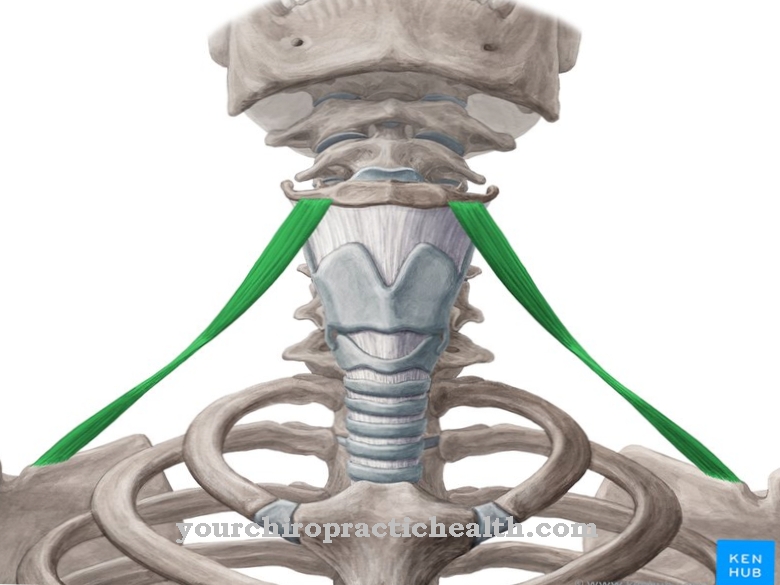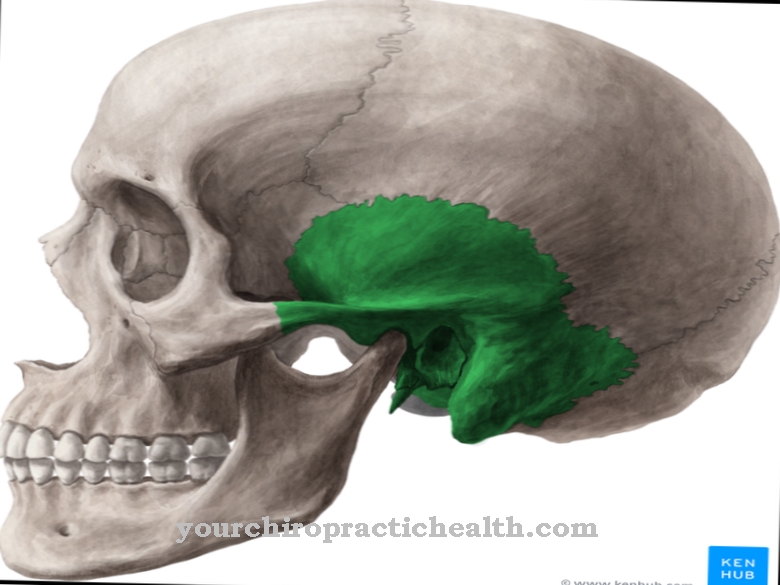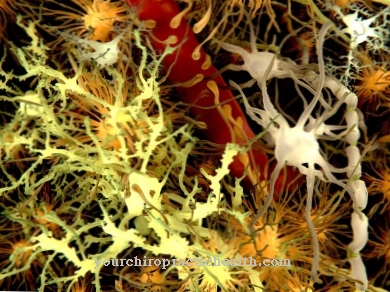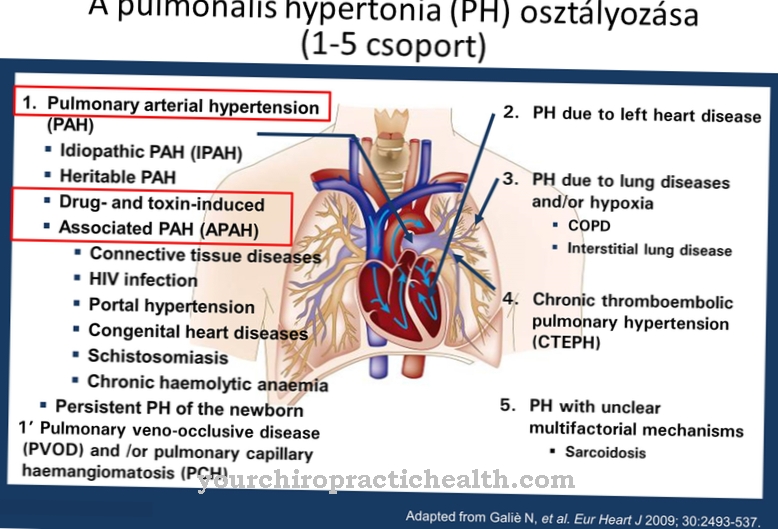The Choroid covers most of the middle skin of the eye and is located between the retina and the dermis. The main task of the skin, which is richly provided with small and large blood vessels, is to supply the eyes, especially the retina, with blood and oxygen. Typical diseases of the choroid are inflammations of various kinds, mechanical injuries caused by accidents or choroidal melanoma.
What is the choroid?
The choroid is the medical name Choroid or Choroid. Together with the iris and the ciliary or radiating body (corpus ciliare), it forms the middle skin of the eye (tunica media bulb or uvea), and it is the largest part of this structure.
The choroid rests directly on the dermis inside the eye and has a dark, brown-black pigmentation. It is the middle layer between the dermis (sclera) and the retina and encloses almost the entire vitreous body with the exception of a small portion in the front area of the eye. The choroid gets its name because it is criss-crossed by numerous small vessels that make it the structure with the best blood circulation in the whole body.
Anatomy & structure
The choroid membrane of the human eye is made up of four different layers: The lamina suprachoroidea, which consists of pigmented connective tissue, lies on the very outside. The lamina vasculosa has a similar structure, in which the connective tissue is traversed by the larger arterial and venous blood vessels of the choroid.
An extensive network of very fine capillary vessels, on the other hand, pervades the deeper layer of the choroid, the lamina choroidocapillaris, which lies towards the retina. Immediately on the pigmented layer of the retina is the lamina basalis, also known as the lamina vitra or complexus basalis. It enters into a direct connection with the retina via Bruch's membrane, which ensures the supply of the retina.
This is vital to nourishing this important structure of the eye. In addition to its extensive range of blood vessels in different sizes, the choroid consists of fibrocytes and collagen, which form the connective tissue of the skin, and melanocytes, which form the basis for pigmentation.
Function & tasks
The main task of the choroid is to supply the eye with the focus on the retina. Because of its location inside the eye, it is dependent on a continuous and adequate supply of blood and oxygen. The choroid can do this optimally because it has a dense network of larger and smaller blood vessels. These lead the arterial, oxygen-enriched blood to the retina and transport the venous blood back.
The retina receives all the nutrients it needs for optimal function through the blood. Since the retina is in constant use every day, it needs a consistent supply of nutrients, which is why the supplying choroid is the area in the body that has the most blood supply for good reason. The second important function of the choroid derives from its many melanocytes and the resulting strong pigmentation: the black-brown protection is effectively able to prevent stray light from penetrating the inside of the eye. Scattered light has, among other things, the unpleasant effect that especially objects that are in weak contrast to one another are poorly recognized.
This primarily affects the eyesight at dusk and at night, especially if there is an additional glare effect from oncoming traffic when driving. The pigmented choroid thus has a protective function with a far-reaching effect.
You can find your medication here
➔ Medicines for eye infectionsDiseases
A typical disease of the back of the eye, where much of the choroid is located, is inflammation. If the inflammatory reaction only affects the choroid, it is called choroiditis, if the choroid and retina are affected at the same time, it is chorioretinitis.
Often this inflammation develops on the basis of another disease such as toxoplasmosis, but a bacterial cause must always be considered. The inflammation of the choroid and retina can, but does not have to cause symptoms. Visual disturbances are characteristic that can lead to complete blindness - namely when the retina can no longer fulfill its function due to degenerative changes. Uveitis is the inflammation of the entire middle skin of the eye, which can also spread to the retina and the vitreous humor.
Possible signs, which also depend on the location of the inflammation in the front or back of the eye, include blurred vision, watery eyes, a foreign body sensation and sensitivity to light. Again, the causes can be systemic disease or bacterial invasion. In children, the disease is often associated with rheumatism. In addition to inflammation, the choroid can also be affected by trauma and, for example, bruised.
A malignant disease with a probability of one in 100,000 people per year is choroidal melanoma, which occurs when the melanocytes of the skin deteriorate. The disease can be diagnosed with an ultrasound scan or fluorescence angiography. It is a serious disease because it tends to form metastases and in these cases is often fatal. In addition to surgery, therapy options are laser therapy and - also in combination - radiation therapy.














.jpg)













